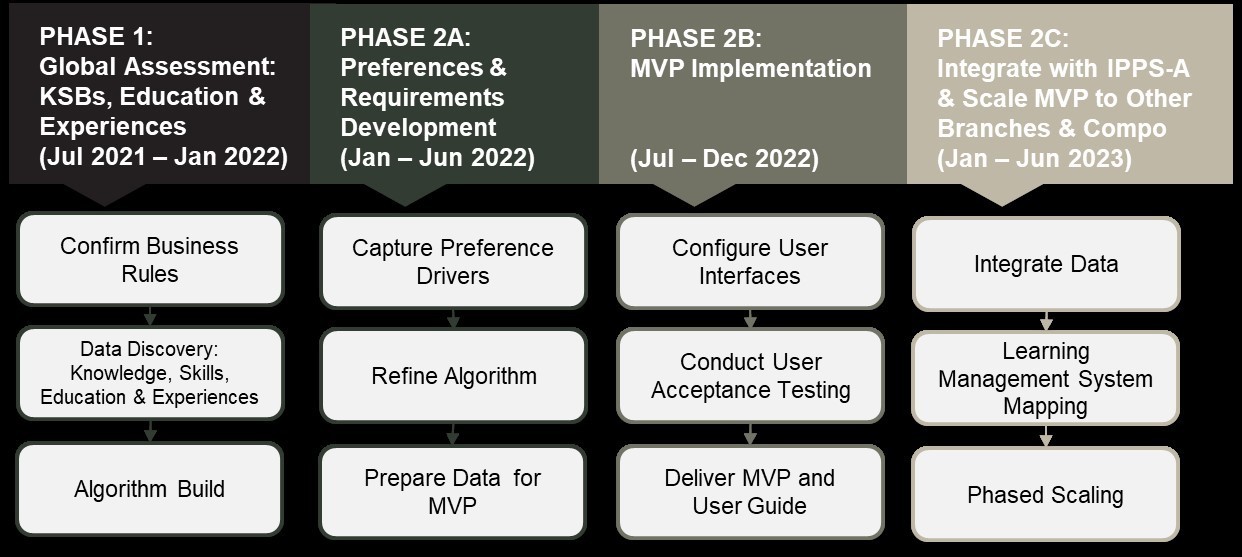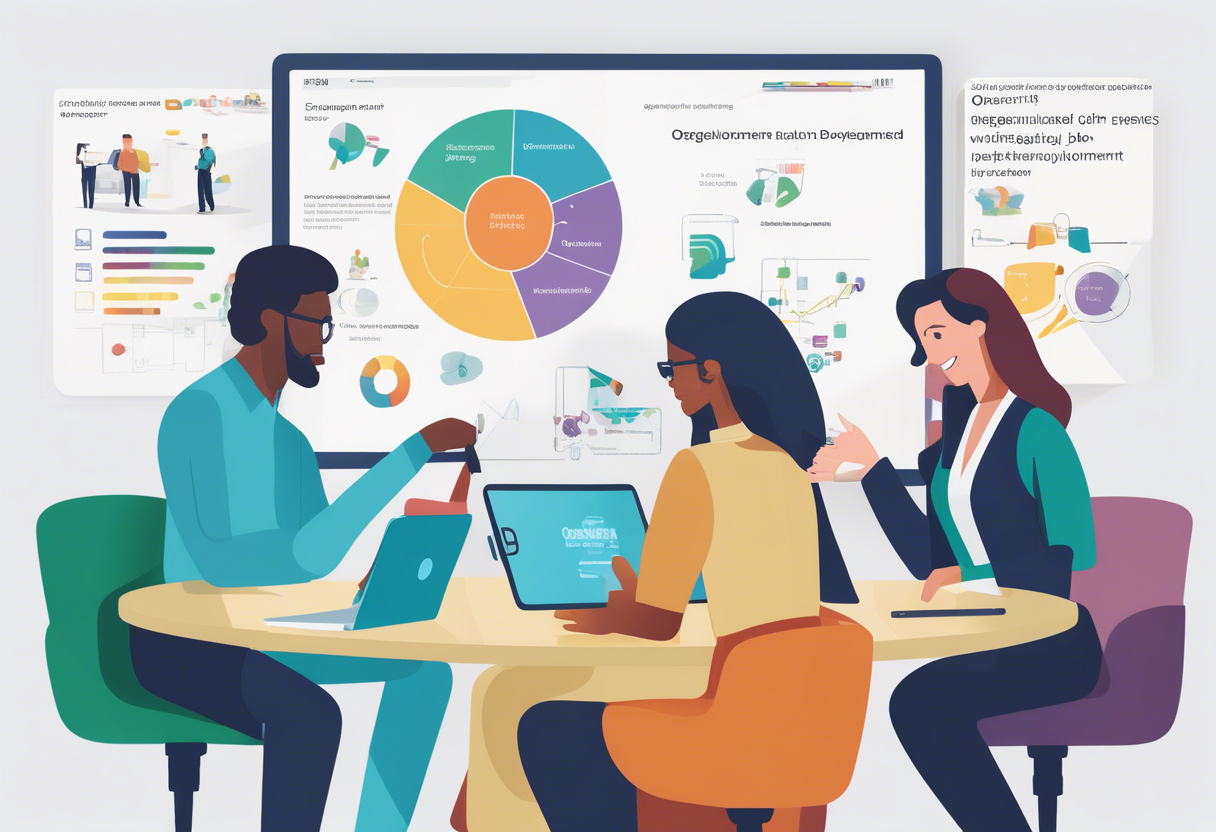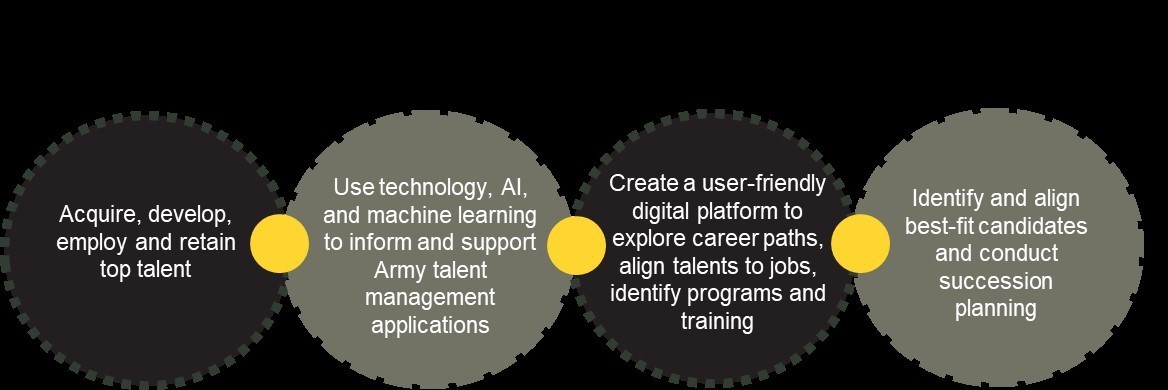
Talent management really matters in business. Companies that do it well often see a 20% boost in how engaged and productive their employees are. Whether you're in HR or managing a team, sharpening your people skills can make a big difference. Picture your workplace buzzing with innovation and teamwork just by improving these skills. This guide will walk you through how to enhance talent management using people skills, giving you what you need to create a thriving work environment. Ready to get started? Let's explore how you can help your team reach its full potential and push your organization forward.
Step-by-Step Guide to Enhancing Talent Management Through Effective People Skills
Recruit Top Talent with Effective Assessments
Tailor Role-Specific Assessments
To find top talent, ensure your assessments align with the specific job requirements. Focus on the skills and competencies needed for each role. By doing so, you can go beyond the usual resumes and interviews to uncover candidates' true capabilities.
For example, if you're hiring a software developer, consider using coding challenges to evaluate problem-solving skills and programming language proficiency.
Use iMocha for Enhanced Talent Hiring
Advanced tools like iMocha can streamline and enhance the hiring process. iMocha provides ready-made assessments that you can customize to fit your needs. These tools leverage AI to evaluate technical, cognitive, and soft skills, offering a comprehensive view of a candidate’s abilities.
With these insights, you can quickly identify top performers, reduce hiring bias, and ensure you're selecting the best fit for your team.
Move Beyond Traditional Resumes and Interviews
Resumes and interviews only reveal a portion of a candidate's potential. To gain a fuller understanding, employ skills-based assessments that allow candidates to demonstrate their real-world abilities. These may include practical tasks or case studies that simulate job challenges.
This approach helps you see how candidates apply their skills in practice, leading to more informed hiring decisions.
Map Current Skills and Identify Talent Gaps
Leverage AI for Skill Mapping
Utilize AI to keep your workforce's skill map up-to-date. AI can analyze job descriptions, employee profiles, and market trends, providing a clear view of the skills within your organization. This aids in identifying gaps and making informed decisions about workforce planning and development.

Utilize Skills Intelligence Platforms
Skills intelligence platforms offer insights into your organization's skill landscape. By using data analytics, they reveal current skill levels and predict future needs. These platforms enable you to create development paths aligned with business goals, ensuring effective upskilling and reskilling.
Provide Continuous Learning and Development
Implement an LMS for Talent Development
A Learning Management System (LMS) is essential for managing learning programs. Ensure it is user-friendly and integrates with other HR systems. Populate it with diverse content and keep it updated. Encourage employees to set personal goals and track their progress within the LMS.
Adopt Micro-Learning and Mobile Content
Micro-learning delivers content in small, digestible pieces, ideal for busy schedules. Design content compatible with mobile devices so employees can learn anytime. Incorporate interactive elements to enhance engagement and retention.
Enhance Learning with Mentorship Programs
Mentorship programs enrich learning by pairing employees with experienced colleagues. Set clear objectives and conduct regular check-ins to track progress. This fosters a culture of continuous learning and knowledge sharing.
Onboard New Employees Effectively
Develop a Comprehensive Onboarding Process
A robust onboarding process facilitates smooth integration for new hires. Plan everything from pre-boarding to the end of probation, including orientation and training. Regularly check in to address questions and gather feedback.
Utilize HR Software for Efficient Onboarding
HR software can automate onboarding tasks, enhancing efficiency. It manages documents, benefits, and training schedules, ensuring nothing is overlooked. This creates a positive first impression and boosts retention.
Implement Performance-Based Talent Management
Establish Clear Standards and Provide Feedback
Establish clear performance standards for each role. Use these for regular evaluations and feedback. Encourage open dialogue and involve employees in goal-setting. This helps them understand how their work contributes to success.
Employ Performance Management Software
Performance management software assists in setting goals, tracking progress, and conducting evaluations. It ensures consistency and reduces bias, fostering a culture of accountability and improvement. The data also informs talent development and planning.
Gather Employee Insights
Collect Feedback Through Surveys and Meetings
Regularly gather employee feedback through surveys, focus groups, and one-on-one meetings. Encourage open communication and use insights to improve the work environment.
Implement Survey Software for Feedback Analysis
Survey software streamlines feedback collection and analysis. It helps track trends and identify areas needing attention, driving positive change and improving engagement.
Foster Employee Engagement and Recognition
Cultivate a Recognition Culture
Recognize and reward employee contributions to boost engagement. Implement programs that highlight achievements and encourage peer recognition, creating a positive work environment.
Design Goal-Aligned Incentives
Design incentives that motivate employees to meet organizational objectives. Make criteria clear and fair, and adjust them as needed based on feedback and business priorities.
Develop a Succession Plan
Identify Critical Roles for Succession Planning
Succession planning ensures business continuity. Identify critical roles and outline the skills needed. Develop potential candidates with targeted training and regularly update the plan.
Leverage Succession Planning Software
Succession planning software streamlines the identification and development of leaders. It offers assessments and development plans, ensuring a data-driven approach to leadership development.
Understanding the Importance of People Skills in Talent Management
People skills are crucial for building relationships and fostering collaboration. They include communication, empathy, and problem-solving. Prioritizing these skills enhances engagement and team dynamics, leading to organizational success.
Step-by-Step: Identifying Essential People Skills
- Assess Needs: Understand your organization's specific needs and goals.
- Conduct a Skills Audit: Evaluate current people skills through surveys and assessments.
- Identify Key Skills: Determine which skills are essential for success.
- Align with Roles: Map skills to specific roles and include them in evaluations.
- Set Development Goals: Encourage personal development goals and provide resources.
Step-by-Step: Developing People Skills
- Create a Training Plan: Develop workshops and e-learning for skills development.
- Leverage Mentorship: Pair employees with mentors for guidance.
- Encourage Peer Learning: Promote learning through team activities and projects.
- Provide Feedback: Offer regular feedback and coaching.
- Measure Progress: Track development through assessments and reviews.
Step-by-Step: Implementing People Skills
- Integrate into Hiring: Use assessments to evaluate candidates' soft skills.
- Embed in Performance Management: Include people skills in evaluations.
- Align with Career Development: Support skill enhancement in career plans.
- Promote a People-Centric Culture: Recognize and reward strong people skills.
- Monitor and Adjust: Continuously improve based on feedback.
Step-by-Step: Measuring the Impact of People Skills
- Define Metrics: Set clear metrics for impact measurement.
- Collect Data: Use surveys and analytics to gather data.
- Evaluate Outcomes: Assess improvements in satisfaction and performance.
- Identify Successes and Challenges: Use findings to refine strategies.
- Report Findings: Share results with stakeholders to support initiatives.
By following these steps, you can enhance talent management and create a more engaged, productive workforce.
Frequently Asked Questions
How Does Skills-Based Talent Management Boost Employee Engagement?
Skills-based talent management can significantly enhance employee engagement by aligning individual strengths with organizational needs. This alignment fosters a sense of appreciation and motivation among employees. By promoting ongoing learning and career development, it provides clear advancement paths, leading to increased job satisfaction. Companies that effectively utilize skills-based management cultivate a culture where employees are driven to excel. For example, implementing personalized development plans can result in longer employee retention and heightened enthusiasm for work.

Key Challenges in Implementing Skills-Based Talent Management
Implementing skills-based talent management presents several challenges. One major hurdle is accurately assessing and aligning employee skills with company requirements, which can be resource-intensive and necessitate the right tools and methodologies. Additionally, integrating skills-based strategies with existing systems can be complex, particularly in hybrid or global environments. Ensuring inclusivity and addressing the diverse needs of the workforce can also be demanding. Moreover, persuading stakeholders to transition from traditional methods can pose a significant challenge.
Differences Between Skills-Based and Traditional Talent Management
Skills-based talent management focuses on identifying, developing, and leveraging employees' skills to achieve organizational objectives. Unlike traditional talent management, which emphasizes roles, tenure, and hierarchy, skills-based management allows for flexible workforce planning by dynamically aligning skills with projects and tasks. Traditional talent management typically manages the entire employee lifecycle, whereas skills-based management prioritizes skill assessment and targeted development, resulting in a workforce that is more adaptable and responsive to change.
